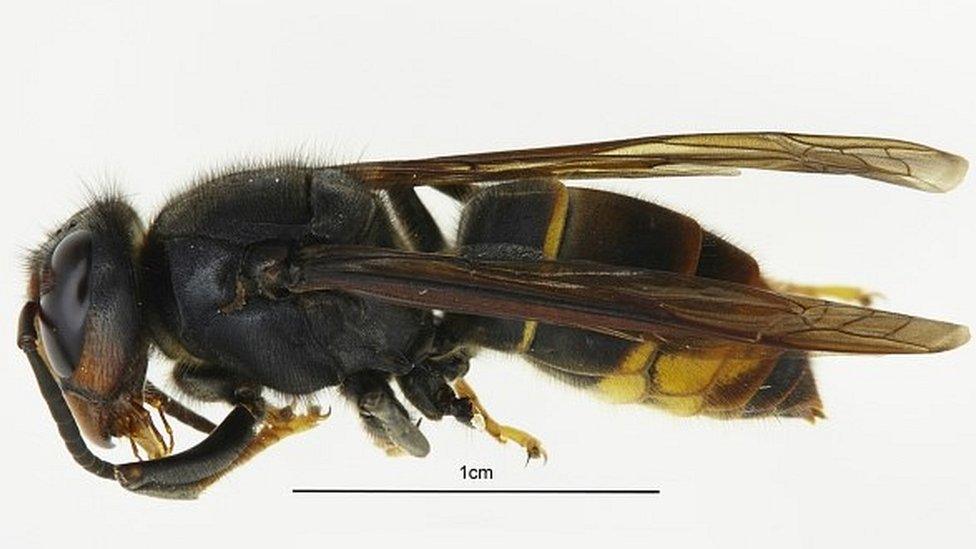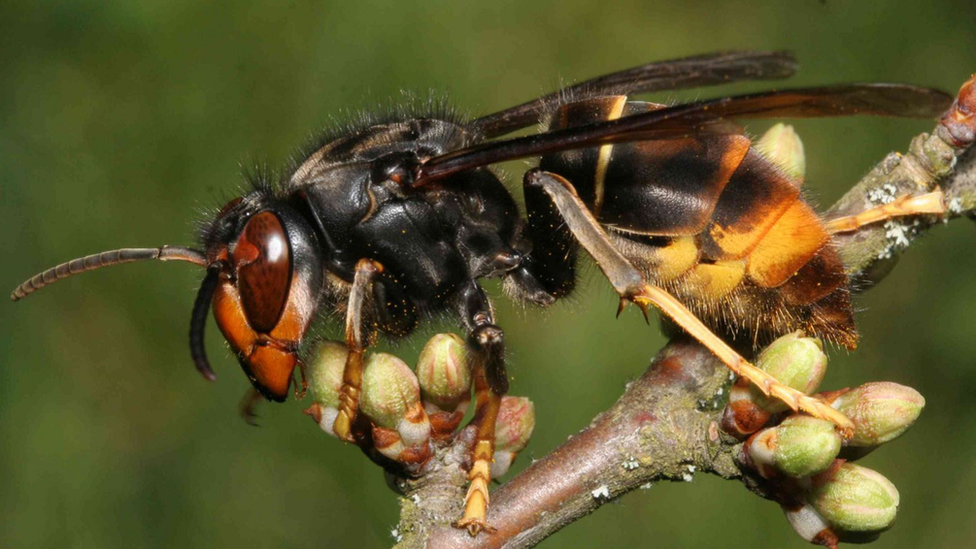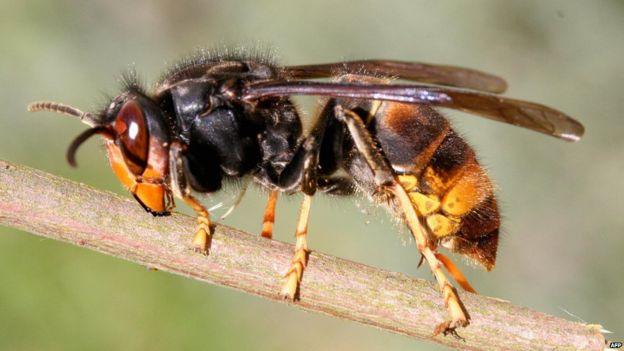Asian hornet nest found and destroyed in Plymouth
- Published

Asian hornets prey on pollinating insects such as honey bees
An Asian hornet nest has been found and destroyed in Devon.
The Department for the Environment, Food and Rural Affairs (Defra) said the nest was destroyed after surveillance in Plymouth.
The surveillance by the National Bee Unit followed confirmed sightings in the city.
UK Chief Plant and Bee Health Officer Nicola Spence urged people to report sightings of the invasive insect as soon as possible.
The insect poses no greater risk to human health than native wasps and hornets.
However, they prey on pollinating insects such as honey bees and can cause major damage to colonies.
'Working at speed'
Ms Spence urged beekeepers to remain vigilant.
"By ensuring we are alerted to possible sightings as early as possible, we can take swift and effective action to stamp out the threat posed by Asian hornets," she said.
"That's why we are working at speed to locate and investigate any nests in the area following the confirmed sightings in Plymouth.
"While the Asian hornet poses no greater risk to human health than other wasps or hornets, they can cause damage to honey bee colonies and other beneficial insects."
'Nightmare'
Gerry Stuart, chairman of the Devon-based Asian Hornet Action Team, said the discovery of a nest in Plymouth was concerning.
He said the spread of the insect in the UK would be a "nightmare".
"They are so destructive - they consume and move on," he said.
"It's very important to realise how precious our pollinators are - not just bees, but hoverflies, butterflies and other pollinators too.
"We are talking about devastation of crops and, if that's affected, it could certainly affect us."
The Natural History Museum, external said Asian hornet queens are about 3cm (1.2in) in length and workers about 2.5cm (1in).
Their legs transition from brown to yellow at the ends and they have an orange face.
Anyone who sees an Asian hornet is urged to report it using Defra's online form, external or via the app Asian Hornet Watch.

How to spot an Asian hornet

The invasive species has an appetite for honey bees
Queens are up to 3cm (1.2in) in length, workers up to 2.5cm (1in)
Velvety dark brown or black mid-body
Black head with an orange/yellow face
Brown rear bordered with a fine yellow band
Brown legs with yellow lower segments

Follow BBC News South West on Twitter, external, Facebook, external and Instagram, external. Send your story ideas to spotlight@bbc.co.uk, external.
- Published27 July 2023

- Published23 July 2023
